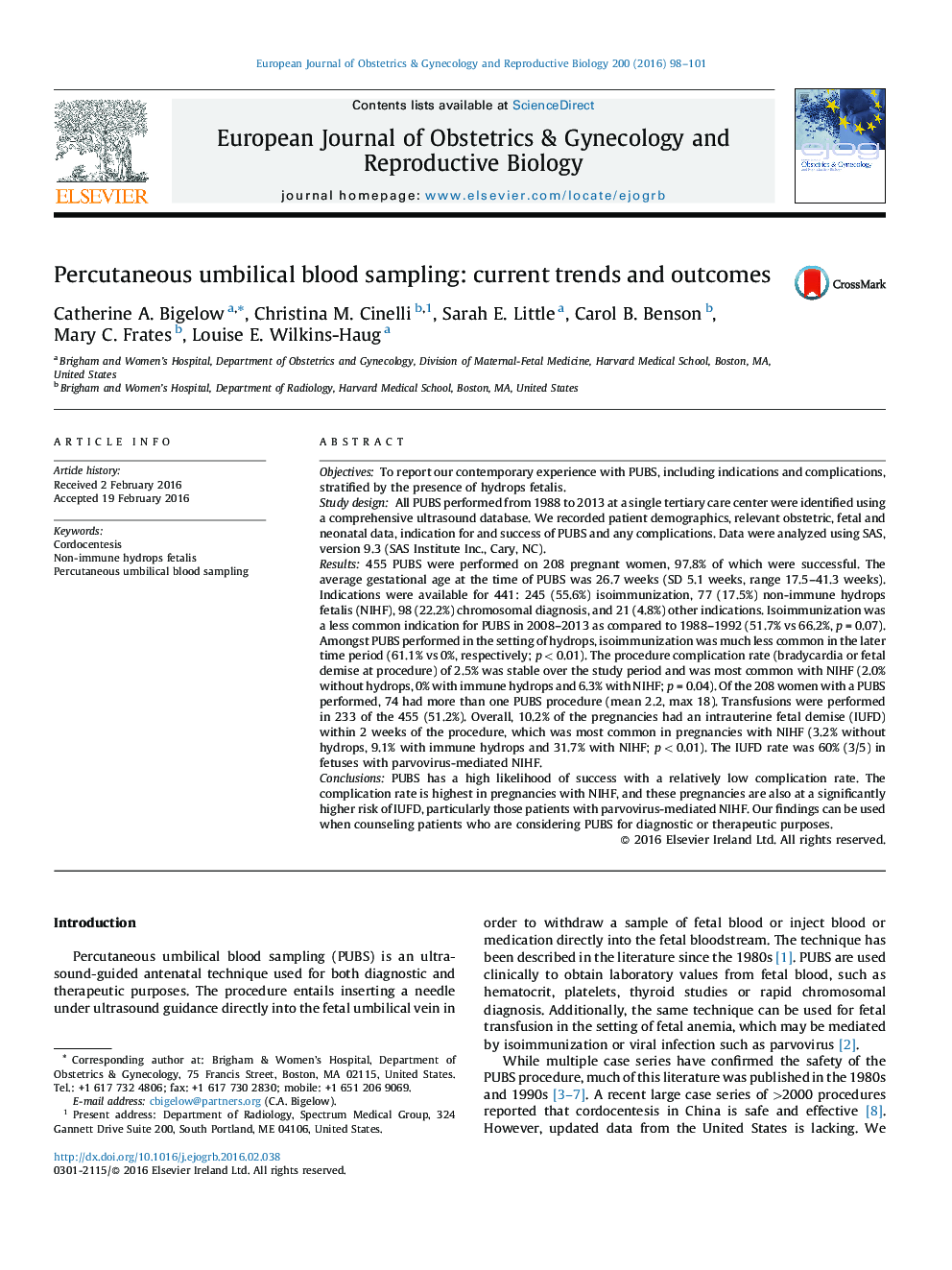| کد مقاله | کد نشریه | سال انتشار | مقاله انگلیسی | نسخه تمام متن |
|---|---|---|---|---|
| 3919250 | 1599781 | 2016 | 4 صفحه PDF | دانلود رایگان |
ObjectivesTo report our contemporary experience with PUBS, including indications and complications, stratified by the presence of hydrops fetalis.Study designAll PUBS performed from 1988 to 2013 at a single tertiary care center were identified using a comprehensive ultrasound database. We recorded patient demographics, relevant obstetric, fetal and neonatal data, indication for and success of PUBS and any complications. Data were analyzed using SAS, version 9.3 (SAS Institute Inc., Cary, NC).Results455 PUBS were performed on 208 pregnant women, 97.8% of which were successful. The average gestational age at the time of PUBS was 26.7 weeks (SD 5.1 weeks, range 17.5–41.3 weeks). Indications were available for 441: 245 (55.6%) isoimmunization, 77 (17.5%) non-immune hydrops fetalis (NIHF), 98 (22.2%) chromosomal diagnosis, and 21 (4.8%) other indications. Isoimmunization was a less common indication for PUBS in 2008–2013 as compared to 1988–1992 (51.7% vs 66.2%, p = 0.07). Amongst PUBS performed in the setting of hydrops, isoimmunization was much less common in the later time period (61.1% vs 0%, respectively; p < 0.01). The procedure complication rate (bradycardia or fetal demise at procedure) of 2.5% was stable over the study period and was most common with NIHF (2.0% without hydrops, 0% with immune hydrops and 6.3% with NIHF; p = 0.04). Of the 208 women with a PUBS performed, 74 had more than one PUBS procedure (mean 2.2, max 18). Transfusions were performed in 233 of the 455 (51.2%). Overall, 10.2% of the pregnancies had an intrauterine fetal demise (IUFD) within 2 weeks of the procedure, which was most common in pregnancies with NIHF (3.2% without hydrops, 9.1% with immune hydrops and 31.7% with NIHF; p < 0.01). The IUFD rate was 60% (3/5) in fetuses with parvovirus-mediated NIHF.ConclusionsPUBS has a high likelihood of success with a relatively low complication rate. The complication rate is highest in pregnancies with NIHF, and these pregnancies are also at a significantly higher risk of IUFD, particularly those patients with parvovirus-mediated NIHF. Our findings can be used when counseling patients who are considering PUBS for diagnostic or therapeutic purposes.
Journal: European Journal of Obstetrics & Gynecology and Reproductive Biology - Volume 200, May 2016, Pages 98–101
